That Protein Sweet Spot: How Much Should You Eat After a Workout?

You’ve crushed your last rep. Heart pounding, sweat dripping, music fading. But here’s the kicker: the real work starts now—recovery.
Recovery isn’t just about rest—it’s about refueling properly. Whether you’re chasing strength, endurance, or faster recovery, nailing your post-workout protein strategy can make all the difference.
So, how much protein does your body really need, and when’s the best time to load up? Let’s dive into the science, cut through the noise, and arm you with practical tips to level up your recovery game.
Recommended Protein Intake for Athletes
When it comes to optimizing your recovery and boosting performance, not all proteins are created equal. To make the most of your post-workout protein intake, understanding what qualifies as high-quality protein and how much to consume is essential.
Let’s break it down.
High-Quality Protein: What Should You Look For?
A high-quality protein is one that provides all nine essential amino acids—building blocks your body can’t produce on its own.
These complete proteins, rich in leucine, are particularly important because leucine serves as the primary driver of muscle protein synthesis (MPS), helping repair and rebuild tissue after training.
Whey protein is a classic example and a favorite among athletes for good reason. Not only is it a complete protein, but it’s also rapidly absorbed, making it ideal for promoting MPS shortly after exercise. This makes it a go-to option for recovery drinks and shakes.
For non-dairy athletes, there are excellent plant-based alternatives, such as pea, soy, or rice protein. While individual plant-based proteins might lack one or more essential amino acids, combining them (e.g., pea and rice protein) can deliver a complete amino acid profile comparable to whey.
Daily Protein Needs
To meet your recovery and performance goals, athletes should aim to consume 1.2 to 2.0 grams of protein per kilogram of body weight daily. This range ensures you’re covering not just recovery but also ongoing energy demands, muscle maintenance, and growth.
Here’s how to personalize your protein intake:
- Training Intensity: High-intensity or endurance activities may require intake on the upper end of the range.
- Body Composition Goals: Building muscle? Lean toward 2.0 g/kg; maintaining weight? Stick closer to the baseline.
- Performance Goals: Protein supports more than strength—it aids in endurance and agility, too. Adjust as needed based on sport-specific demands.
By spreading your protein intake across meals and snacks, your body will have a steady supply of amino acids to fuel your goals.
Post-Workout Protein Guidelines
Your workout might be done, but recovery has just begun.
To jump-start the process, aim to consume 0.2 to 0.5 grams of protein per kilogram of body weight post-workout. For most athletes, this equates to 10–30 grams of high-quality protein.
Why this range? Post-workout protein helps replenish muscle glycogen, repair tissue micro-damage, and boost adaptation, all essential for making strides in your fitness journey.
Expert Recommendation
Pair your protein with a quick-digesting carbohydrate for maximum recovery benefits. For example, a whey protein shake with a banana or a plant-based smoothie with oats can deliver the nutrients you need to come back stronger.
Timing: When Should You Eat Protein After a Workout?
When it comes to recovery, timing is often overlooked.
Here’s the thing though: when you eat protein can influence how effectively your body repairs muscle tissue, replenishes energy stores, and primes you for the next workout. While focusing on quality and quantity is essential, timing adds a strategic layer that optimizes recovery.
Protein timing is about consistency and making deliberate choices that fit your goals and lifestyle.
Whether you’re aiming for maximum muscle growth, faster recovery, or maintaining energy levels, understanding when to refuel can help you unlock your full potential. Let’s dive into the science to simplify what works, and debunk what doesn’t.
Anabolic Window: Fact or Myth?
You’ve probably heard about the “anabolic window”—the golden period when your body is primed to make the most out of post-workout nutrients. While it’s often described as 30 minutes post-exercise, there is no concrete research to back it up. Recent research suggests you have more flexibility than you might think.
To support recovery and muscle repair, aim to refuel within 30 minutes to 2 hours after finishing your workout. During this time, your muscles are highly responsive to nutrients like protein, making it easier to kick-start recovery.
But don’t sweat it if you miss the mark occasionally. The anabolic window is a guideline, not a hard rule. As long as you’re consistent with your protein intake throughout the day, you’ll reap the benefits.
Does Consistently Consuming Protein Affect Recovery?
Recovering smart is about maintaining a steady supply of protein to maximize muscle protein synthesis (MPS). This means spreading your intake across the day.
For best results, aim for 15–25 grams of protein every 3–5 hours, paired with nutrient-dense meals or snacks. Think of a Greek yogurt parfait with fruit, a chicken and quinoa salad, or almond butter on whole-grain toast.
Consistent protein intake doesn’t just power your workouts—it builds resilience, recovery, and sustainable performance day after day.
Essential Protein Sources for 11 Athletic Diets [h2]
No matter your dietary preferences or restrictions, meeting your protein needs is crucial for optimizing recovery and achieving peak performance. Athletes with specialized diets face unique challenges but can still access plenty of high-quality protein options to fuel their goals. Let’s explore tailored recommendations across 11 popular diets.
-
Omnivorous Protein Sources
Diet Overview: An omnivorous diet provides the broadest range of proteins, combining animal and plant-based options. It’s well-suited for athletes seeking versatility in meeting their recovery needs.
Protein Sources:
- Lean meats: Chicken breast, turkey, lean beef
- Fish: Salmon, tuna, cod, white fish
- Eggs: Whole eggs, egg whites
- Dairy: Greek yogurt, cottage cheese, milk
-
Whey protein: A fast-digesting, complete protein, ideal for post-workout recovery
-
Protein for Vegetarian Athletes
Diet Overview: For athletes avoiding animal products, plant-based proteins can provide the essential amino acids needed for muscle repair when properly combined.
Protein Sources:
- Lentils, chickpeas, black beans
- Tofu, tempeh
- Quinoa, edamame
- Hemp, pea, and soy protein powders
-
Nuts and seeds: Chia, flax, hemp, almonds
-
Gluten-Free Protein Sources
Diet Overview: Athletes with gluten intolerance or celiac disease must exclude gluten but can still enjoy nutrient-dense protein choices.
Protein Sources:
- Chicken, turkey, lean beef
- Fish, seafood, eggs
- Gluten-free grains: Quinoa, buckwheat, rice
-
Gluten-free protein powders: Pea, rice, hemp
-
Dairy-Free Protein Options
Diet Overview: For those avoiding dairy, focus on other nutrient-rich options to ensure recovery without compromising performance.
Protein Sources:
- Chicken, turkey, fish, eggs
- Dairy alternatives: Soy, almond, or oat milk
- Protein powders: Pea, rice, soy
-
Legumes and beans: Lentils, chickpeas
-
Mediterranean Diet
Diet Overview: Centered on whole foods and healthy fats, this diet supports recovery while promoting long-term health.
Protein Sources:
- Fish: Salmon, sardines, tuna
- Lean poultry: Chicken, turkey
- Legumes: Chickpeas, lentils
- Dairy: Greek yogurt, cottage cheese
-
Nuts and seeds: Almonds, walnuts, flaxseeds
-
Paleo Diet
Diet Overview: Focused on “ancestral” foods, the Paleo diet includes a mix of lean meats, fish, fruits, and nuts while excluding grains and dairy.
Protein Sources:
- Grass-fed beef, poultry, pork
- Wild-caught fish
- Eggs
- Nuts: Almonds, cashews, walnuts
-
Seeds: Pumpkin, sunflower, chia
-
Vegan Diet

Diet Overview: A plant-based diet excludes animal products, requiring thoughtful protein planning to hit recovery goals.
Protein Sources:
- Tofu, tempeh
- Legumes: Lentils, chickpeas, black beans
- Grains: Quinoa, farro, bulgur
-
Plant-based protein powders: Pea, rice, hemp
-
Ketogenic Diet
Diet Overview: High in fats and low in carbs, the ketogenic diet emphasizes animal-based protein and healthy fats for energy and muscle recovery.
Protein Sources:
- Meats: Beef, chicken, turkey
- Fatty fish: Salmon, mackerel
- Eggs
- Full-fat dairy: Cheese, Greek yogurt
-
Avocados, nuts, seeds
-
Nordic Diet
Diet Overview: This diet prioritizes foods native to Scandinavia, such as fatty fish and root vegetables, providing protein options rich in omega-3s.
Protein Sources:
- Fish: Salmon, herring, trout
- Game meats: Venison, reindeer
- Lean poultry: Chicken, turkey
- Legumes: Peas, beans
-
Low-fat dairy: Skyr, yogurt
-
DASH Diet

Diet Overview: Designed to lower blood pressure, the DASH diet emphasizes lean proteins and nutrient-dense foods to support recovery and heart health.
Protein Sources:
- Fish: Salmon, tuna
- Poultry: Chicken, turkey
- Low-fat dairy: Milk, cheese
- Legumes: Black beans, kidney beans
-
Tofu, tempeh, nuts
-
Flexitarian Diet
Diet Overview: A mostly plant-based diet with occasional animal products balances nutrient density and sustainability for athletic performance.
Protein Sources:
- Plant-based: Lentils, chickpeas, quinoa
- Animal-based: Eggs, dairy, fish (salmon, sardines)
- Soy products: Tofu, tempeh
-
Protein powders: Pea, rice, hemp
-
Intermittent Fasting
Diet Overview: Intermittent fasting requires athletes to optimize nutrient intake during designated eating windows, ensuring adequate protein for recovery.
Protein Sources:
- Animal-based: Eggs, chicken, fish, lean beef
- Dairy: Greek yogurt, cottage cheese
- Plant-based: Legumes, tofu, beans
💡 Related Guide
Thinking post-workout nutrition is all about protein shakes? Think again.
Refueling after exercise is key to muscle recovery, energy replenishment, and long-term gains — and it goes way beyond just protein.
Discover the top 10 foods to eat after a workout and learn how balanced nutrition can elevate your post-workout routine!
Top Protein Sources for Athletes by Diet
|
Diet |
Animal-Based Protein Sources |
Plant-Based Protein Sources |
Notes |
|
Omnivorous |
Lean meats (chicken, turkey, beef), fish, eggs, dairy, whey protein |
Legumes (lentils, black beans, chickpeas), quinoa, nuts, seeds |
Offers the widest variety of protein sources, making it easier to meet post-workout protein needs. |
|
Vegetarian |
Eggs, dairy (Greek yogurt, cottage cheese, milk) |
Legumes, tofu, tempeh, quinoa, nuts, seeds, plant protein powders |
Focuses on dairy and eggs while excluding meat, fish, and poultry for protein intake. |
|
Gluten-free |
Lean meats, fish, eggs, plain yogurt, hard cheeses |
Quinoa, lentils, black beans, chickpeas, nuts, seeds |
Avoids grains like wheat, barley, and rye; rely on naturally gluten-free protein sources like quinoa and legumes. |
|
Mediterranean |
Chicken, Fish, Eggs, Greek Yogurt |
Legumes, Nuts, Seeds |
Focuses on lean proteins and healthy fats |
|
Paleo |
Grass-fed Beef, Poultry, Fish |
Nuts, Seeds, Avocados |
Excludes grains and dairy, focuses on whole foods |
|
Plant-Based/Vegan |
Tofu, Tempeh, Legumes |
Quinoa, Chia Seeds, Pea Protein, Legumes, Tofu, Tempeh, Hemp, Edamame |
Excludes all animal products; must ensure protein intake is high enough for muscle recovery |
|
Ketogenic |
Salmon, Eggs, Beef, Pork |
Avocados, Coconut Milk, Nuts |
High-fat, low-carb focus for fat-burning |
|
Nordic |
Fish (salmon, herring, mackerel), eggs, fermented dairy (kefir, skyr) |
Root vegetables, beans, peas |
Emphasizes cold-water fish and seasonal plant-based options; lower in red meat consumption. |
|
DASH |
Fish, lean poultry, low-fat dairy, eggs |
Legumes, tofu, nuts, seeds, whole grains |
Focuses on heart-healthy protein sources, prioritizing low-fat options and reducing salt intake. |
|
Flexitarian |
Eggs, Chicken, Fish |
Legumes, Tofu, Nuts |
Primarily plant-based with some flexibility to include animal protein |
Why Personalization Matters for Peak Athletic Performance
When it comes to protein, one size doesn’t fit all.
Your body’s needs depend on factors like body composition, training volume, and sport-specific demands. Endurance athletes may require extra protein for muscle repair after prolonged exertion, while strength athletes often benefit from higher protein levels to fuel muscle growth and recovery.
To truly perform at your best, personalized protein strategies are key. By aligning your intake with your unique genetic predispositions and fitness goals, you can boost recovery, enhance performance, and reduce the risk of injury or burnout.
Ultimately, smart nutrition is about working with your body—not against it.
🎧 Can your nutrition strategy be holding you back from peak performance?
In this episode of The Genetic Coach, Sports Dietitian Pippa Mullins shares cutting-edge strategies for endurance nutrition. Learn how to optimize your fueling through genetic insights, master carb timing, and train your gut for race day success.
🎙️ Listen now for science-backed nutrition strategies that could transform your performance!
GENEFIT: Gene-Based Support System for Sustainable Performance
GENEFIT takes the guesswork out of personalization, leveraging your unique genetic data and activity metrics to help you train smarter, recover more effectively, and reduce injury risk. Here's how our science works:
- Genetic Insights on Muscle Protein Synthesis: Discover how your genetic predispositions impact your ability to build and repair muscle, ensuring that your protein intake aligns with your recovery needs.
- Recovery Recommendations: Get tailored guidance based on your genetic data and training sessions to optimize muscle repair and maintain peak performance.
- Session Scores: Instantly evaluate each workout with gene-informed feedback, helping you track progress and make smarter training decisions.
GENEFIT’s data-driven approach gives athletes a 360-degree view of how their training affects their body. With these insights, they can fine-tune their training, lifestyle, and nutrition to align with their genetic strengths for sustainable performance.
Common Misconceptions About Post-Workout Protein
Even seasoned athletes can fall victim to protein-related myths. Believing in myths might not just slow your progress but could also lead to missed opportunities for optimizing your performance. Let’s debunk a few of the most common misconceptions:
❌ “More Protein = Better Results”
Your body can only utilize a certain amount of protein at once for muscle repair and recovery. Consuming more than your body requires won’t speed up recovery or build additional muscle.
On the contrary, it may instead lead to excess calorie intake, potential weight gain, or digestive discomfort. Optimal protein consumption is about precision, not excess.
❌ “You Must Eat Protein Immediately Post-Workout”
Your body’s ability to repair and grow muscle extends beyond just 30 minutes post-workout. The focus should be on meeting your daily protein needs consistently. Timing can help optimize recovery, but it’s not the sole factor for success.
Protein Timing, Quality, and GENEFIT: The Winning Combo for Faster Recovery
To fully optimize your recovery, you need to know exactly how much protein to consume, when to eat it, and most importantly, why the quality of your protein matters.
Experiment with your protein intake timing—whether it's post-workout, during your eating window, or spread throughout the day—and adapt it based on your individual needs and goals. Pay attention to protein quality and make sure you're getting the right nutrients for muscle recovery and performance improvement.
Are you looking to level up your training and recovery potential?
GENEFIT is a revolutionary gene-based training app that helps you understand your genetic strengths, optimize your protein intake, and recover smarter. Our personalized feedback loop based on your DNA and activity data will help you hit your next record faster, without the risk of injury. Discover the difference science-backed guidance can make!
FAQs
How does protein intake vary between different types of athletes, such as runners versus weightlifters?
Runners generally focus on endurance, needing 1.2–1.6 grams of protein per kilogram of body weight daily for recovery.
Weightlifters, aiming for muscle growth, may require 1.6–2.0 grams per kilogram to support muscle repair and hypertrophy. Tailor intake based on your activity type, training goals, genetic parameters, and overall protein needs.
What is the 2-hour protein rule?
The 2-hour protein rule refers to consuming protein within 2 hours post-workout to maximize muscle recovery and growth. While it's beneficial to eat protein after a workout, focusing on overall daily intake is more critical than exact timing.
How much protein is too much for the kidneys?
Healthy individuals can safely consume up to 2.2 grams of protein per kilogram of body weight daily. However, excessive intake, beyond what your body needs, may strain kidneys if there’s preexisting kidney disease. Focus on meeting your personal protein requirements without overloading.
Does protein timing really matter?
Protein timing matters, but it’s not the sole factor for recovery. While eating protein post-workout supports muscle repair, spreading protein intake evenly throughout the day (every 3–5 hours) has a bigger impact on maximizing muscle protein synthesis.
What is the golden hour after a workout?
The "golden hour" refers to the optimal period, typically within 1–2 hours post-exercise, to consume protein for recovery. During this time, your body is primed for muscle repair. However, meeting your daily protein needs is more essential than focusing solely on this window.













